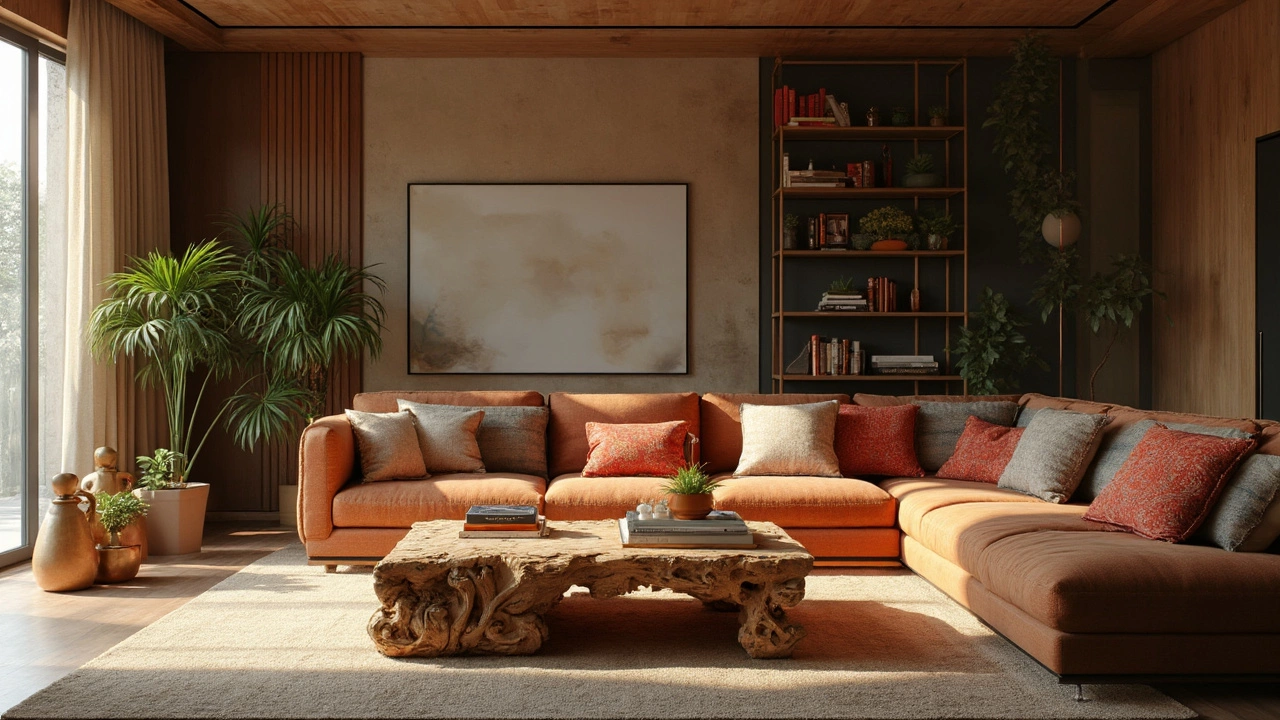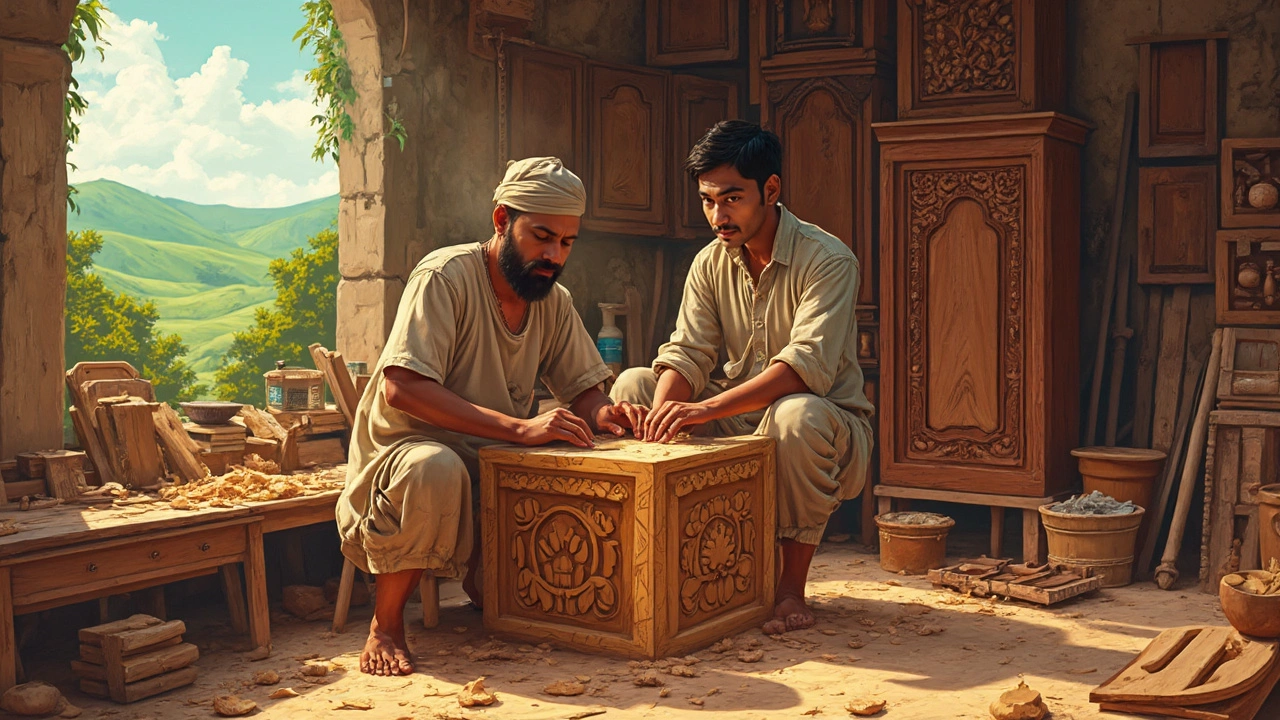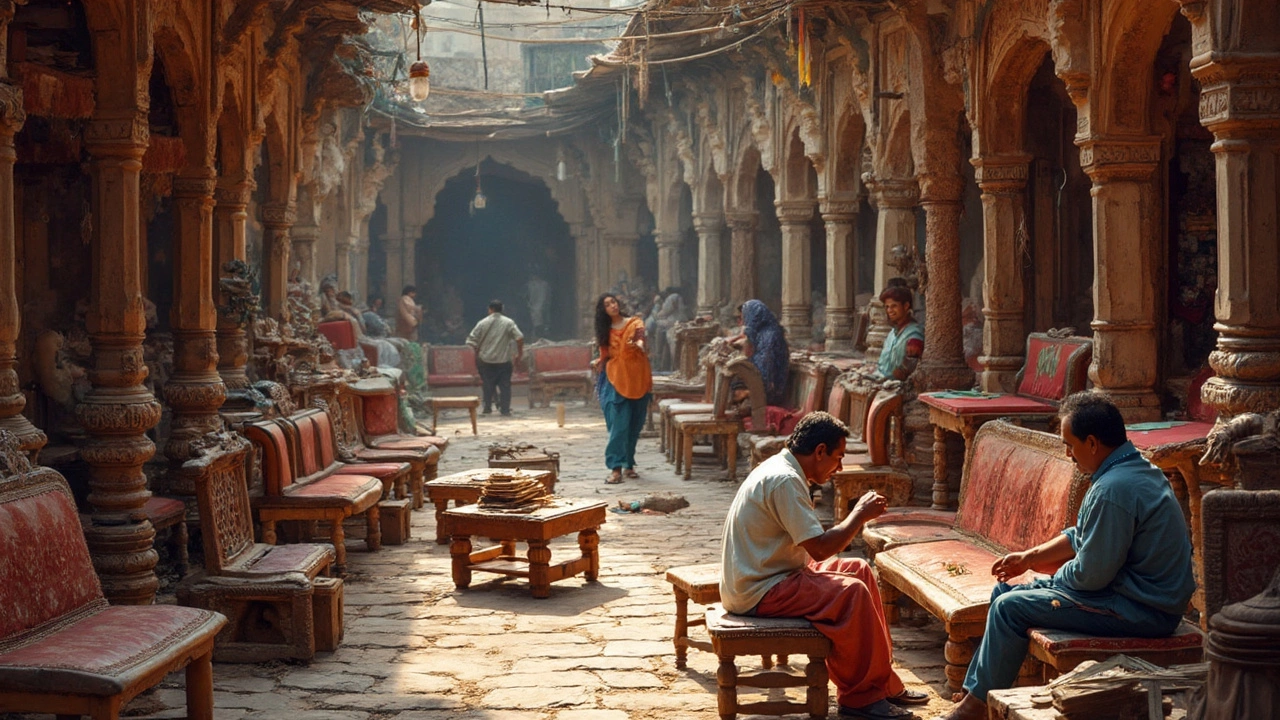India's furniture industry isn't just about filling spaces; it's a showcase of artistry and tradition blending with modern trends. Wooden furniture takes the spotlight, crafted from materials like teak, rosewood, and mango wood, each offering unique grains and durability. But it’s more than just wood; you’ll also find metal and upholstery pieces, reflecting a mix of styles from traditional to contemporary.
Ever wondered where all this exquisite furniture goes? Indian furniture finds homes across the globe, with the US, UK, and the Middle East being top buyers. It's not just about aesthetics—there’s a historical richness embedded in these pieces. You might spot influences from Mughal, Rajasthani, or even colonial styles, echoing the diversity of Indian culture.
- Diverse Materials and Designs
- Top Export Destinations
- Why Choose Indian Furniture
- Impact of Cultural Heritage
- Sustainability and Quality
Diverse Materials and Designs
Imagine having a piece of India in your home, right down to the wood! When it comes to Indian furniture, the choice of materials isn't just vast; it’s pretty smart. The country’s got some stellar options.
Wood, The Classic Choice
Let’s start with the heavyweights: teak and rosewood. They’re not just for show; they're known for lasting ages and standing up to the wear and tear of time. Then there's mango wood, which is all about sustainable choices. It's fast-growing, making it eco-friendly and lighter on the pockets.
More Than Just Wood
Of course, it’s not all about wood. Metalwork also shines in Indian furniture—from intricate brass inlays to stylish wrought-iron pieces, you get a blend of durability and elegance. Upholstered options are catching the eye too, combining comfort with traditional patterns.
Embracing Diversity in Styles
What makes furniture exports from India stand out is the variety in design. You have everything from the artistic carvings of Rajasthan to the sleek, minimal designs that fit right into a modern apartment. Plus, the ethnic motifs often tell stories, giving each piece a personal touch.
Popular Design Types
- Traditional Carvings: Known for rich detailing and regal feel.
- Modern Minimalist: Clean lines and functional forms.
- Eco-friendly Trends: Use of recycled or renewable materials.
- Fusion Styles: A mix of traditional motifs with modern trends.
With each piece from India, you’re getting a slice of its culture, whether it’s through the grain of wood or the story in its carvings. That’s what makes Indian furniture not just furniture, but an experience.
Top Export Destinations
India has carved out a niche globally with its furniture exports, characterized by diverse styles and reliable materials. You might be curious where all the beautifully crafted Indian furniture ends up. Well, some destinations stand out significantly on the international stage.
The United States
The US tops the list as a major buyer of Indian furniture. The American market appreciates the craftsmanship and variety offered, from intricate woodcarvings to sleek contemporary designs. This isn't just about tradition—the US consumers are also interested in sustainably sourced materials, making India's wood furniture a perfect fit.
United Kingdom
Over in the UK, Indian furniture makes its mark alongside other luxury brands. British homes often include Indian pieces that bring a touch of cultural diversity to their interior décor. The blend of colonial influences with local craftsmanship creates something that stands out in British settings.
Middle Eastern Countries
In the Middle East, opulence is key, and Indian furniture fits right into this demand for luxury. Driven by rapid real estate and hospitality growth, Indian exports serve villas, hotels, and palaces, combining practical use with an aesthetic appeal.
Australia
Australia is another growing market for Indian wood furniture. Here, the emphasis is on quality and sustainability, aligning perfectly with many Indian furniture companies’ missions. Australian consumers favor furniture that brings warmth and uniqueness into their homes.
| Country | Main Imports | Popular Styles |
|---|---|---|
| United States | Wooden and metal furniture | Contemporary, Carved Wood |
| United Kingdom | Classic and antique reproductions | Colonial, Traditional |
| Middle East | Luxurious metal and wood pieces | Opulent, Detailed |
| Australia | Eco-friendly wooden furniture | Contemporary, Rustic |
These countries appreciate Indian furniture not just for its uniqueness but also because it offers a combination of quality and affordability. The growing international demand is a testament to India's position in the global furniture market.

Why Choose Indian Furniture
When you think of Indian furniture, picture a blend of traditional craftsmanship with modern aesthetics. What makes these pieces standout? First, it’s the sheer versatility. Whether you're looking for the ornate beauty of Sheesham wood carvings or the minimalist lines of mango wood tables, Indian furniture covers the spectrum.
One reason buyers across oceans opt for these items is the exceptional craftsmanship. Known for their attention to detail, Indian artisans have techniques passed down through generations. Don’t just take my word for it; as design expert David Lynch mentions:
"Indian furniture embodies a perfect mix of heritage and contemporary design, making it a global favorite."
Sustainable Choice
For those environmentally conscious, Indian furniture offers eco-friendly options. Many manufacturers focus on sustainable practices, using reclaimed wood and promoting fair trade. This way, you get stunning pieces that are kind to the planet.
Diverse Range and Cultural Richness
The range of design influences is another reason to choose Indian exports. You’ll find elements from various Indian states, each with its distinct style and history. Whether leaning towards the regal Mughal motifs or the vibrant Rajasthani colors, there's something for every taste.
Price is the final tick in the box. Without burning a hole in your pocket, you can add a touch of elegance to your living room. That's not just a purchase; it's an investment in art and tradition.
Impact of Cultural Heritage
When it comes to Indian furniture, cultural heritage plays a pivotal role in the design and craftsmanship that sets these pieces apart in the global market. From centuries-old techniques to intricate patterns, each piece tells a story of India's rich history and diverse culture.
Traditional Craftsmanship
Indian artisans have honed their skills over generations, passing down techniques that have defined the art of furniture making. Techniques like inlay work, a delicate process involving embedding delicate materials into wood, are seen in many Indian furniture pieces. Rooted deeply in India's artistic traditions, these methods give the furniture an unparalleled uniqueness.
Influence of Historical Styles
Take, for instance, the detailed carvings that draw from Indian cultural motifs like paisley designs or the peacock, a national symbol. Influences from various historical periods, like Mughal and colonial India, are prominent in the designs, merging different eras into something timeless.
For example, Mughal-style furniture often includes ornate detailing and luxurious finishes, offering a glimpse into the opulence of that era. The colonial period, on the other hand, introduced a mix of solidity and simplicity, creating a genre often referred to as 'Indo-British' style.
Reflecting Diversity
India's vast cultural diversity further adds layers to its furniture exports. Regions like Rajasthan are known for vibrantly painted furniture, while other areas might focus on minimalistic bamboo or cane pieces. This variety means there's something for almost every taste and home style.
Overall, the cultural heritage embedded in Indian furniture isn't just about the past; it's a living testament to the country's evolving artistry. By combining age-old techniques with new-age innovation, Indian manufacturers keep surprising international markets, making these pieces not just furniture, but a piece of history for homes around the world.

Sustainability and Quality
When it comes to Indian furniture, sustainability and quality are two sides of the same coin. Manufacturers in India are increasingly focusing on eco-friendly practices, using responsibly sourced materials and non-toxic finishes. Many are adopting methods that reduce waste, like using every part of the wood, and even include off-cuts in smaller pieces or intricate designs.
Eco-Friendly Practices
Companies are leveraging traditional techniques that minimize environmental impact. For instance, a lot of wood furniture production involves handcrafted processes which not only preserve the cultural heritage but also reduce the carbon footprint. Craftsmen often prefer using hand tools over machinery, ensuring lower energy consumption.
Quality Assurance
Quality isn't just a buzzword in the furniture exports; it’s a reputation. Indian manufacturers adhere to international standards, ensuring each piece is durable and long-lasting. Rigorous quality checks at multiple stages mean you get furniture that’s built to withstand both time and use.
The Role of Certifications
Many manufacturers are now certified by international bodies for sustainable practices, which adds a layer of trust. Certifications like FSC (Forest Stewardship Council) help in assuring buyers that the wood is sourced sustainably, providing peace of mind along with aesthetic pleasure.
Here’s a look at some interesting data that showcases India’s approach to sustainable furniture:
| Aspect | Details |
|---|---|
| Use of Recycled Materials | 35% of the materials used are recycled in some capacity. |
| Handcrafted Production | Approximately 40% lower carbon emissions compared to machine-based processes. |
| International Certifications | Over 50% of furniture manufacturers hold one or more sustainability certifications. |
Choosing India's furniture not only brings a piece of history and art into your home but also supports environmentally responsible practices. Next time you're considering a new piece of furniture, remember that your choice impacts not just the look of your space but the world at large.
